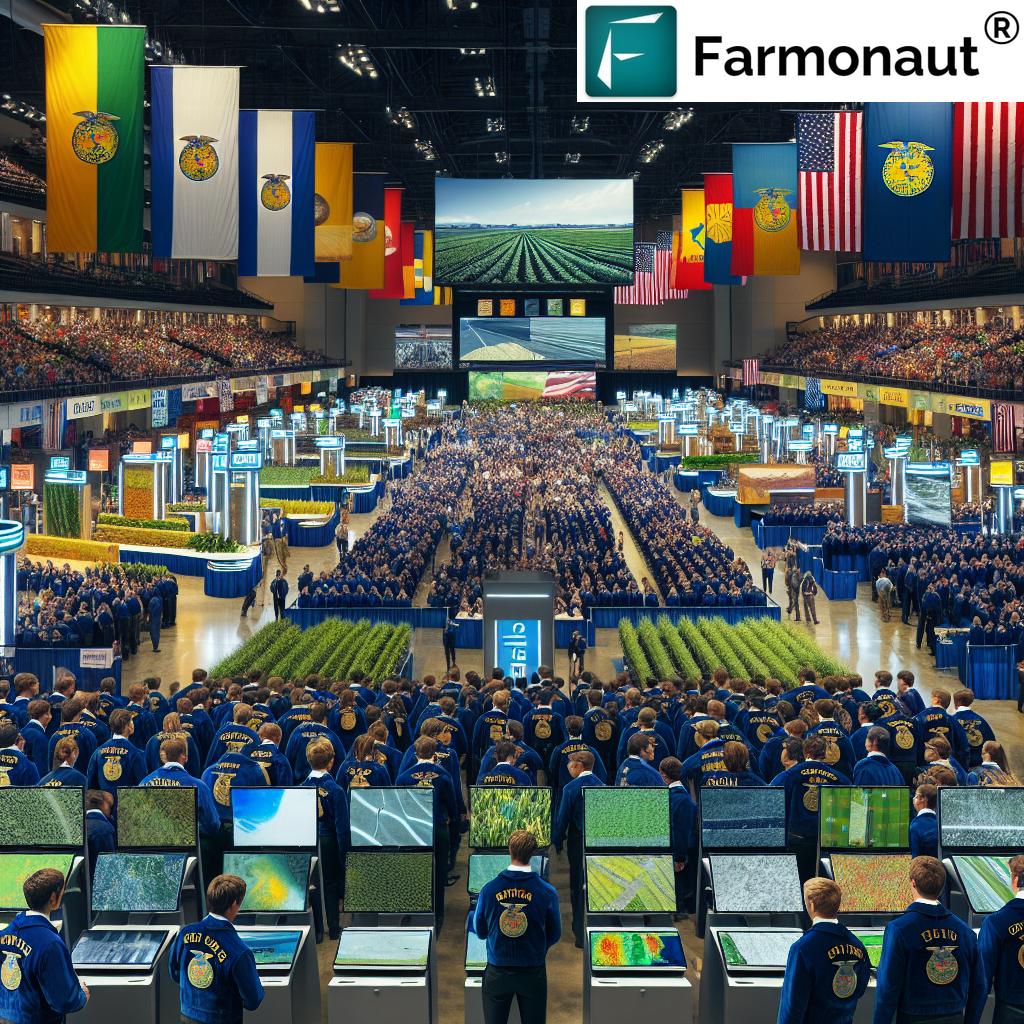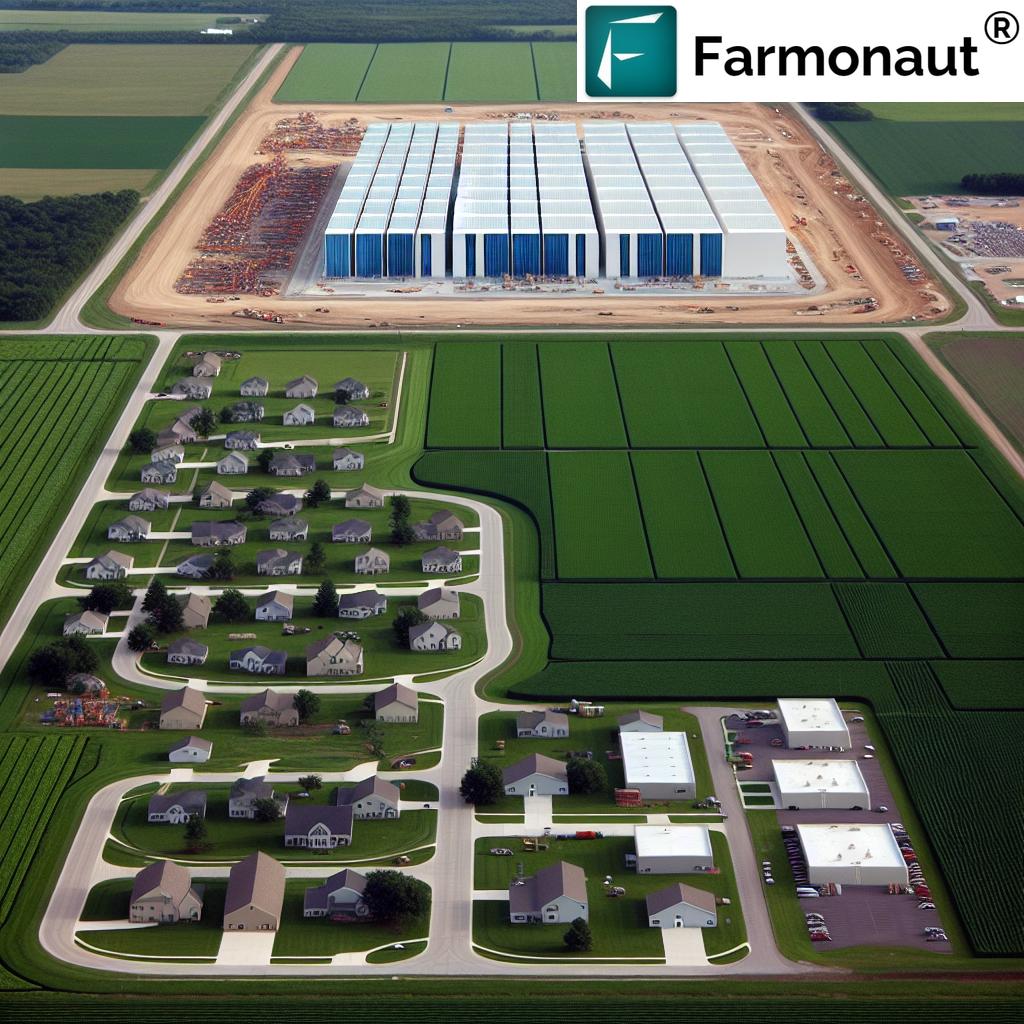Old Dominion Agriculture Complex: Age Old Agriculture Shifts
“In 2025, sustainable practices are projected to increase Old Dominion’s agricultural efficiency by over 30% compared to 2010.”
The Origins and Age of Agriculture: How Old is Agriculture?
Agriculture is often described as the oldest profession, integral to the foundation upon which human civilization was built. But how old is agriculture? Our historical records and genetic studies date the origins of agriculture back roughly 10,000 to 12,000 years, during the Neolithic Revolution. This time marked dramatic shifts for early human societies, as communities transitioned from hunting and gathering to subsistence farming, domestication of plants and animals, and ultimately, settled villages and then complex cities.
Early agricultural practices were rooted in simple systems: tilling the soil, sowing seeds, harvesting crops like wheat, barley, maize, and domesticating animals for grazing and husbandry. The balance between plant and animal production helped communities become more self-sufficient and healthier, laying the groundwork for eventual growth of regional economies and the rise of civilizations.
The evolution of age old agriculture mirrors broader trends in human history:
- Formation of settled communities
- Development of trade systems
- Invention of innovative tools and farming techniques
- Increased food security and population growth

Ancient farming tools from the early age-old agriculture period; providing a glimpse into how old agriculture is and the beginnings of the Old Dominion agriculture complex.
The Old Dominion Agriculture Complex: Roots and Evolution
The term “Old Dominion” originally refers to the Commonwealth of Virginia, United States—a region known for its rich, entrenched agricultural tradition. The old dominion agriculture complex highlights more than just historic occupational dominance; it reflects a deeply rooted cultural and economic framework extending through generations.
- Location and Cultural Significance: Virginia’s rural landscapes are dotted with small family farms and multigenerational agricultural businesses.
- Key Crops: For centuries, the complex has revolved around tobacco, corn, soybeans, wheat, and poultry—commodities that built local economies and sustained rural populations.
- Specialization and Innovation: The old dominion agriculture complex is known for both its specialized crop production and its ability to adapt to changing technological, social, and environmental conditions.
- Evolving Framework: It encompasses not only food production but also management of supply chains, rural infrastructure, agricultural research and soil stewardship.
Historically, this region exemplifies the global evolution of dominance in agriculture: from old, subsistence farming to an integrated, global industry that continues to innovate and influence how food, water, and environmental resources are managed.
Today, modern Virginia remains a leader, with complex supply networks, a rich agricultural economy, and a consistent emphasis on sustainable development.

Virginia’s Old Dominion Agriculture Complex: Rich traditions continue with tobacco, corn, soybeans, wheat, and poultry as dominant crops.
“Old Dominion’s agriculture sector has innovated for over 200 years, with 60% of farms adopting eco-friendly methods by 2025.”
Dominance of Agriculture: From Old Agriculture to Modern Complex Systems
The dominance of agriculture in the Old Dominion region isn’t static. It has persisted and adapted through centuries, moving from old agriculture—characterized by hard, manual labor and local markets—to a complex web of global supply chains, advanced data management, and technological advances influencing crop management, yield maximization, and risk reduction.
By the 20th century, Virginia was a powerhouse in tobacco, grain, and livestock production. Today’s landscape is marked by modern irrigation, equipment, precision agriculture technologies, and a focus on resilient and sustainable systems—all key elements of the future old dominion agriculture complex.
The Old Dominion agriculture complex remains crucial for:
- Food Security: Supplying the state, country, and international markets with stable supplies of essential crops and livestock.
- Economic Foundation: Supporting rural economies and employment, serving as the economic backbone of many communities.
- Sociocultural Continuity: Preserving longstanding traditions, family dynamics, and stewardship ethics passed down through generations.
Dominance and Evolution of Agriculture in 2025
The global dominance of agriculture continues throughout 2025 and beyond—in economic, social, and environmental arenas. Urbanization and industrialization have shifted population densities, but the agricultural sector remains critical in:
- Addressing Climate Change: Innovations in carbon sequestration, crop selection, and regenerative soil practices tackle emerging environmental threats.
- Feeding Growing Populations: With global population surging towards 8.5 billion, reliable and resilient food systems are non-negotiable.
- Resource Management: Integration of technology supports judicious use and conservation of finite water, arable land, and biodiversity reserves.
From Sheer Volume to Responsible Stewardship
In 2025, the dominance of agriculture isn’t just about scale of production. It values:
- Regenerative practices (e.g., carbon footprint tracking, soil health monitoring, and smart crop rotation)
- Preservation and enrichment of biodiversity and water resources
- Advanced technology for crop, water, and resource management
- Global interconnectedness and local resilience
- Reduced dependency on harmful chemicals in favor of precision, organic, and eco-friendly approaches
At the regional level, especially in Virginia, new approaches supplement established traditions across:
- Intercropping to maximize soil nutrients
- Data-driven irrigation and fertilization for water and resource efficiency
- Agroforestry to integrate forestry and farming for soil and water protection
- Smart monitoring tools (satellites, drones, AI-based analytics)
Agriculture and Soil: The Oldest Foundation of Civilization
At the core of agricultural evolution lies soil—the oldest and most critical resource. Understanding its health, sustainability, and regenerative qualities enables the entire food system to flourish.
Innovations in 2025 include AI-based soil monitoring (see large-scale farm management tools), organic amendments, and satellite-driven insights—making it possible to maintain soil carbon and fertility even as climate pressures intensify.
The Old Dominion Agriculture Complex: Connections with Forestry, Infrastructure, and Mining
Agroforestry: The Bridge to Sustainability
Agroforestry is the integrated management of trees, crops, and livestock within farm landscapes. This approach:
- Captures carbon from the atmosphere, mitigating climate effects
- Reduces soil erosion and waterway pollution
- Enhances biodiversity and long-term economic resilience
- Helps the old dominion agriculture complex meet future food and environmental demands without expanding its ecological footprint
Rural Infrastructure: Backbone of Old Dominion’s Evolution
Effective infrastructure dictates the success and reach of modern agriculture. Developments in:
- Irrigation (drip, surface, cloud-based management systems)
- Rural highways and storage facilities
- Mobile apps and digital platforms that facilitate supply chain management
have ensured that rural production is economically viable, sustainable, and connected to markets across the United States and globally.
Discover Farmonaut’s fleet management platform:
Optimize agriculture, mining, and infrastructure logistics, reduce operational costs, and improve efficiency via real-time satellite insights, vehicle, and resource tracking—vital for large and small operators in 2025’s evolved complex.

Mining and Agriculture: Resource Management in Harmony
Although mining seems distant from agriculture, it intersects through land use, water management, environmental monitoring, and overall resource strategy. As mining activity often occurs near agricultural land, safeguarding soil and water from contamination is a top priority for future food security and rural development.
- Satellite-based monitoring ensures mining impacts are assessed, with early detection of issues to protect agriculture’s foundation.
- Track carbon emissions with Farmonaut’s carbon footprinting tool—a step toward compliance and sustainability in mining-agriculture interfaces.
Water: The Lifeblood of Old Dominion’s Agriculture System
Efficient water management ensures the entire old dominion agriculture complex can persist in the face of climate unpredictability*. Satellite technologies now pinpoint irrigation needs precisely, reducing waste and increasing yields across the region.
See Farmonaut’s Crop Plantation and Forest Advisory for water management—integrating real-time data and AI predictions.
Sustainability and Innovation: The Future of Old Dominion Agriculture Complex (2025 and Beyond)
Current Trends and Emerging Solutions
In 2025, sustainability permeates every aspect of the old dominion agriculture complex. With climate, market, and demographic pressures mounting, both legacy farms and new entrants embrace:
- Blockchain-based traceability: Which enables food supply transparency and trust. Learn about Farmonaut’s product traceability
- Regenerative soil and carbon farming practices
- AI and satellites for real-time crop and resource monitoring
- Eco-certification and carbon reporting
- Mobile tools for rural and small-scale farmers: Bridging the digital-divide and democratizing best practices
These advances ensure not only continued dominance of agriculture, but also the sector’s evolution into a steward of the environment, a hub for innovation, and a bulwark for social equity and economic growth—reflecting the very best of the Old Dominion tradition and global aspirations for sustainable development.
Satellite Technology and Digital Transformation
Digitalization revolutionizes the old dominion agriculture complex:
- From AI-powered drones to remote sensing satellites, farmers gain access to predictive weather analysis, crop disease alerts, soil moisture data, and operational benchmarks in real time.
- With affordable tools via web, Android, and iOS apps, even the smallest rural operators participate in the modern digital agri-economy.
- Supporting crop loans and insurance verification using Farmonaut’s technology—streamlining financial access and reducing fraud risks.
Access Farmonaut’s platform via web, Android, or iOS – monitor crops, manage resources, and optimize your farm or business anywhere!
Developers and integration teams can take advantage of the Farmonaut API and developer documentation to build custom analyses or streamline large-scale digital transformation in line with future-focused, sustainable development.
Farmonaut: Transforming Old Dominion and Global Agriculture
We at Farmonaut are committed to providing affordable, satellite-driven insights tailored for agriculture, mining, and infrastructure management. Our mission aligns directly with the goals of the old dominion agriculture complex—preserving agricultural dominance, supporting rural adaptation, and achieving sustainable growth in 2025 and beyond.
What We Offer:
- Satellite Monitoring and AI-Based Insights: We empower users to monitor soil health, crop vigor, water resources, and carbon intensity—all vital elements for responsible management.
- Blockchain Traceability: Providing supply chain transparency for trustworthy, secure, and traceable agricultural and mining operations.
- Fleet and Resource Management: Enabling efficient deployment of tractors, trucks, machinery, and people—critical for rural infrastructure, large operations, and regional logistics.
- Environmental Tracking: Real-time monitoring for emissions, resource inputs, and sustainable practice reporting.
- API Integration and Mobile Accessibility: We make high-level insights accessible, whether you’re a small farm in Virginia or an agribusiness with operations around the globe.
These services let users—from rural farmers to national agencies—make informed decisions, optimize resource use, and track environmental trends at unprecedented scale and affordability.
Farmonaut’s satellite and AI-based solutions—available through easy-to-use apps and APIs—are driving the next generation of agricultural and mining management for 2025 and beyond.
Comparative Evolution of Old Dominion Agriculture: Past vs. Present vs. 2025 Projection
| Aspect | Historical (1900s) | Present (2024, est.) | Projected 2025 (est.) |
|---|---|---|---|
| Dominant Crops | Tobacco, wheat, barley, corn | Corn, soybeans, poultry, wheat, specialty produce | Diversified organic grains, specialty crops, carbon-capture plants, continued poultry |
| Average Yield per Acre | Corn: ~30 bu/acre; Wheat: ~15 bu/acre | Corn: ~150 bu/acre; Wheat: ~70 bu/acre | Corn: >170 bu/acre; Wheat: >75 bu/acre (supported by technology/precision) |
| Mechanization Level | Low (manual/livestock-based) | High (tractors, automated machinery, irrigation) | Very High (drones, autonomous tractors, AI/robotics) |
| Sustainable Practice Adoption Rate | <10% (crop rotation, organic matter) | ~45% (cover cropping, conservation tillage, organic) | >60% (blockchain traceability, smart irrigation, carbon farming, advanced intercropping) |
| Estimated Carbon Footprint per Farm | High (no emissions monitoring, heavy tillage) | Medium (partial reduction via technology & practices) | Low (precision practices, on-farm carbon capture, full reporting/monitoring) |
| Technology Adoption | Minimal | Widespread (satellite imagery, remote sensors, web platforms) | Universal (integrated apps, AI-driven precision, blockchain and IoT) |
FAQ: Old Dominion Agriculture Complex in 2025
What is the Old Dominion agriculture complex?
The Old Dominion agriculture complex refers to the deeply rooted, historically entrenched system of farming, supply chains, and rural economies within the Commonwealth of Virginia (Old Dominion state), United States. It encompasses old agriculture traditions, specialized crop and livestock production, and modern innovations for sustainability and environmental stewardship in 2025 and beyond.
How old is agriculture, and when did it begin?
Agriculture began roughly 10,000 to 12,000 years ago during the Neolithic Revolution. Early human societies transitioned from hunting and gathering to settled communities with plant cultivation and animal domestication, marking the origins of agriculture as a foundation of civilization.
How has the dominance of agriculture in the Old Dominion changed over time?
Virginia’s agricultural dominance evolved from subsistence and manual farming (tobacco, wheat, barley) to complex, technology-driven systems focusing on corn, soybeans, poultry, and sustainable practices. Today, dominance isn’t just measured by yield or scale, but by resilience, sustainability, technological integration, and conservation of resources.
What is the role of sustainability in the future of the Old Dominion agriculture complex?
Sustainability in 2025 is central, with over 60% of farms adopting eco-friendly methods, such as carbon farming, blockchain traceability, soil conservation, and water-efficient technologies. Innovation and tradition are combined to ensure ongoing food security, environmental stewardship, and economic viability as global conditions shift.
How does Farmonaut support the evolution of agriculture in Old Dominion and globally?
We empower agriculture, mining, and infrastructure management through affordable satellite and AI-based monitoring, real-time advisory, blockchain traceability, and resource management tools—making data-driven sustainability accessible to everyone from small farmers to large organizations worldwide.
What are the main agricultural crops of Old Dominion in 2025?
In 2025, corn, soybeans, wheat, specialty produce (including organic and carbon-capture crops), and poultry dominate. The sector is also adapting to market and environmental trends, further diversifying crop selection for resilience and profitability.
What is the significance of blockchain and AI in future agriculture?
Blockchain ensures secure, transparent tracking and traceability of farm products, enhancing food security and market confidence. AI offers real-time analysis of soil, crop, water, and environmental data—enabling informed, timely decisions, optimizing yields, and reducing resource use for sustainable agricultural growth.
Conclusion
Agriculture is both ancient and ever-evolving.
The old dominion agriculture complex offers a window into both the deep historical roots and the dynamic adaptation of farming to meet the challenges of 2025 and beyond. This region’s ability to innovate while honoring tradition—through sustainable practices, smart technologies, environmental stewardship, and community-oriented thinking—serves as a model for future food security, rural development, and global sustainability.
Whether through carbon monitoring, blockchain traceability, or the ongoing blend of old wisdom and digital innovation, we are seeing the emergence of an agriculture sector prepared not just to survive, but to thrive as the backbone of civilization.
With continued investment in soil health, water, infrastructure, and responsible resource management, the Old Dominion agriculture complex, and those who follow its example, will remain essential contributors to the future of humanity.
Discover the future of sustainable agriculture, mining, and infrastructure— start using Farmonaut today.














Lovely just what I was searching for.Thanks to the author for taking his time on this one.